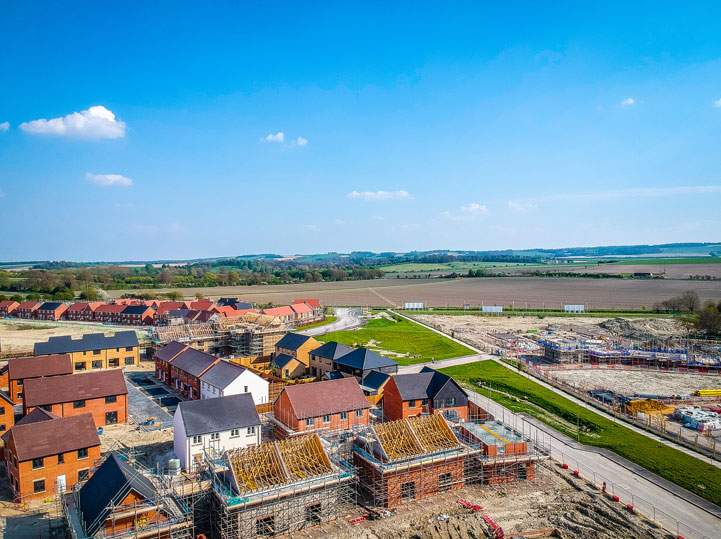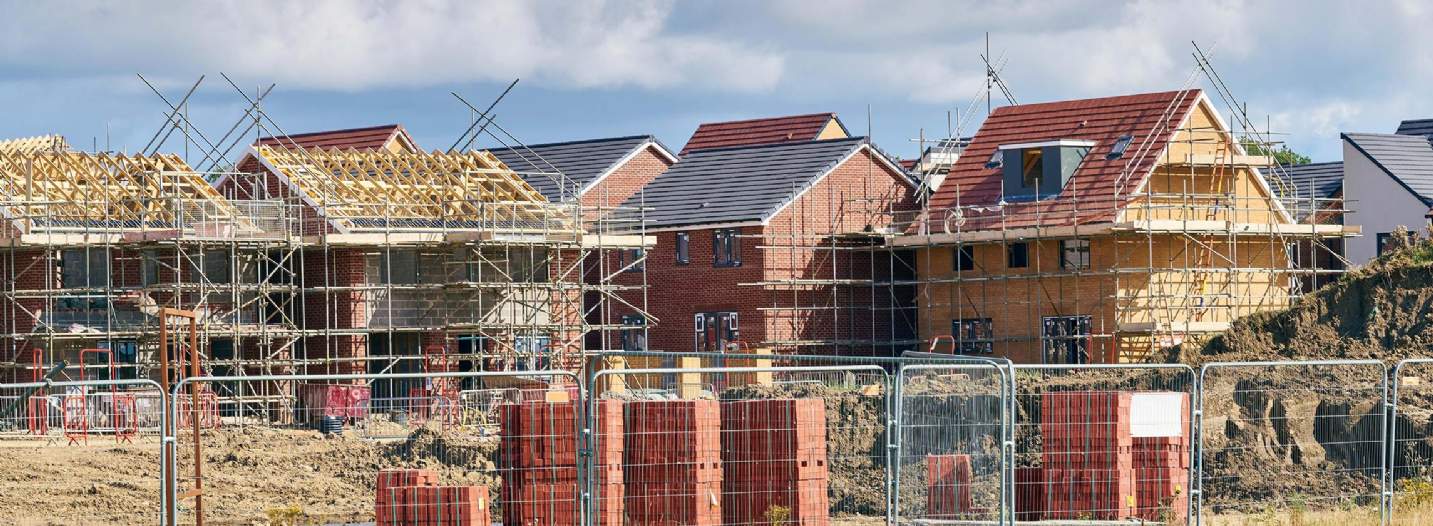More confidence but limited activity in the residential development land market
The uptick in confidence in the residential development land market seen at the start of the year has continued in Q2 2024. Appetite for land has proved resilient, with more players returning to the land market including broader interest from the PLC housebuilders seeking land opportunities across a range of site sizes. This has meant that land values have remained relatively stable. However, land deals are taking much longer to progress than in the post-Covid-19 bounce in 2021/22.
More resilience than expected?
UK greenfield and urban land values maintained their resilience in Q2 2024, taking the annual change to -3.2% and -5.7% respectively, compared to a low of -8.0% and -8.7% in the twelve months to September 2023. Greater stability in the economy and housing market has supported the uptick in confidence in the land market. A net balance of 64% of Savills development agents reported positive market sentiment in Q2 2024, broadly consistent with the 73% reported in Q1 2024 and higher than the 31% reported in Q2 2023.
House prices grew by 1.5% in the twelve months to June 2024, according to Nationwide, pointing to resilience in the housing market despite the ongoing high cost of borrowing. Inflation fell to 2% in May, finally reaching the Bank of England’s target for the first time in three years. In the new build market, the number of site visitors and reservations has improved in the first part of 2024 compared to 2022/23, albeit with a little volatility in recent months, according to NHBC. This has translated into more encouraging sales rates for new homes with the PLC housebuilders typically selling in the range of 0.55 to 0.6 private homes per outlet per week, but with some level of variation.
The development pipeline is shrinking
A lack of new land supply remains a fundamental challenge. Planning consents fell to an estimated 237,000 homes in the year to Q1 2024, according to the HBF. This represents the first time that planning consents have fallen below completions since 2008/09, indicating that we have a shrinking development pipeline. Our latest forecast for housing completions suggests that housing completions could fall to 160,000 by 2024/25. Therefore, those that are active in the land market are competing for fewer sites, supporting the resilience in land values.
Variation in demand
Despite tempered positivity in the wider housing market, transaction levels in the land market remain muted. Nationally, land sales in the first half of 2024 were 21% below the previous three-year average, according to Savills.
Appetite for land is robust across a range of parties, including major housebuilders, partnership developers and privately funded developers. There has been an uptick in the number of bid levels over the last quarter, particularly for optimum-sized sites in primary greenfield locations. There does, however, remain significant variance in bid levels, with some Savills development agents citing examples of sites where the highest bids are more than double the bids at the lower end of the range.
Land deals are also taking much longer to progress than in 2021/22. This is the result of multiple factors, including board approvals for bids taking longer, significant variation in bid levels for sites, more complicated drawn-out payment terms and a lack of urgency amongst some players to commit to land deals. In some cases, the inability to secure a Section 106 partner on sites is also causing a considerable slowdown in deals progressing.
Challenged viability for some brownfield sites
There remain significant challenges in delivering high-density flat-led schemes in urban locations due to the higher risk profile and additional build costs required to deliver these schemes, alongside higher costs of debt and less confidence in future viability. There is very limited transactional evidence for urban sites this quarter, making it challenging to robustly assess the change in urban development land values in Q2 2024. Urban land values for student housing are proving more favourable than Build to Rent and private sale. This has been the case in some parts of London, the South Coast, the North East and Scotland, for example. In other markets (particularly low-value tertiary locations), urban land values are coming under pressure due to schemes being unviable. There are also examples of brownfield sites coming back onto the market that are now no longer viable to deliver, such as in Luton, Norwich and Southampton.
Northern land markets continue to outperform
By region, the land markets in the North continue to outperform the rest of the country, driven by higher levels of house price growth, resilient sales rates and strong competition for sites outstripping available supply. Northern greenfield values increased by 1.3% in Q2 2024, taking annual change to -0.6%, compared to -3.2% for UK greenfield land. House prices in Northern regions proved more resilient, with annual house price growth in the North East (2.9%), North West (4.1%) and Yorkshire and the Humber (3.7%), exceeding the national average in the twelve months to June 2024, according to Nationwide.
A mixed bag of demand
The return of the PLCs
PLC housebuilders have been more active in the land market than in the previous six to twelve months. Whilst some are cautious and are looking to preserve margins, others are bidding competitively for a range of site sizes from 50 units to fill gaps in their pipelines, to larger sites to grow their number of outlets. Average outlets are historically low, posing a major barrier to future completions growth, as reported in the Savills LPDF and Richborough Estates report. Some of the major housebuilders are considering mergers/acquisitions, partly in order to maintain volumes.
Housing Associations remain largely out of the land market, related to a sharp contraction in demand for Section 106 homes
Lydia McLaren, Associate Director, Residential Research
A greater role for partnerships
Partnerships have become much more successful in the current market, with slowing private home sales enabling housebuilders to provide alternative routes to delivery and de-risk large sites. Vistry Partnerships has been very active in the land market, seeking land opportunities under its partnerships model across most regions. There are also new entrants considering partnerships, for example in markets in the North and Midlands.
A highly limited market for Section 106
Housing Associations remain largely out of the land market, related to a sharp contraction in demand for Section 106 homes across the country. 59% of Housing Associations are no longer intending to acquire Section 106 or are reducing their requirements, driven largely by the lack of financial capacity and a focus on existing stock, according to our latest research on Section 106 delivery. The declining market for Section 106 has the potential to disrupt the ability of developers to progress on sites but also to acquire land, leading to significant delays to land deals.

Outlook
The new Government has plans to build 1.5 million homes over the next five years. To do this, supply will need to increase significantly, and we will need market demand to support the sale of new homes alongside other tenures.
How fast the land supply comes forward compared to market demand for homes will dictate the future for development land values. Whilst land supply is limited, land values will remain resilient. But if supply increases faster than market demand, we could expect greater transaction volumes in the land market and downward pressures on land prices. As this has not happened yet, it is unlikely in the short term, therefore the current resilience in greenfield land values is likely to continue due to the shortage of supply. The market for urban sites is likely to remain challenged until viability improves.
In the short term, local authorities will also need to adapt and offer greater flexibility within Section 106 agreements to avoid the contraction in demand for Section 106 having a prolonged impact on housing supply.
For more information, our research hub shares the latest data and expert insight into the residential development and investment markets.
Please contact our Development teams for more information and to see the services we offer.
